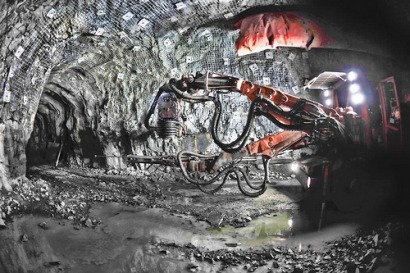
Eight new mines have started production in West Africa in the last three years, with another 13 mine projects planned for the region. Ghana alone has nine major mines and 600 smaller mining operations, all currently looking for international partners to scale up production.
In the case of gold, for example, the combined annual output of Ghana, Mali, Guinea, Burkina Faso, Mauritania and Ivory Coast has increased by 65% in five years, to roughly 6.7 million ounces, explains John Thomson, Managing Director of Exhibition Management Services – co-organiser of the biennial West African Mining and Power industry Exhibition (WAMPEX).
But for the industry to continue to grow, investments in these countries’ energy infrastructures are critical, since unpredictability power supplies are considered to be one of the key hindrances to industrial growth and wider economic and social development in the region. Many countries have unreliable, aging equipment, with Nigeria a prime example; operating at one-third of its installed capacity.
Ghana, meanwhile, relies on water in the Volta River to feed the hydroelectric turbines below the Volta Dam, which supplies almost all the country’s electricity. Occasionally droughts disrupt water flow causing power cuts and subsequently reducing mining output.
Renewable energy “a growing alternative”
“Demand for power in West Africa is growing rapidly, and to meet this, new installations are required on a regular basis,” continues Thomson. “Some countries are upgrading hydroelectric facilities and increasing dam capacity. Another viable medium-term strategy is power sharing with neighbouring countries through regional grids. Renewable energy such as solar, wind, and geothermal power are a growing alternative energy source.”
Some progress is being made to boost energy output and security of supply. A recent $3 billion loan accord between Ghana and the China Development Bank for instance was signed to help Ghana develop its energy industry. This was quickly followed by a $10.4 billion concessionary loan agreement with the Export-Import Bank of China for the development of rail, road, and energy infrastructure. “The funding is in place and the business opportunities are now ‘real’,” says Thomson.
“Mining is the largest consumer of power in the West African region, and more power will be needed as mining activity increases,” says Thomson, who goes on to explain that next year’s WAMPEX event will include a power component, since the conference and exhibition is “the perfect medium to address this critical sector”.
The WAMPOC 2012 Conference in Accra (Ghana) runs from 6 to 8 June 2012 and provides a platform for discussing and debating the state of the mining and power industries in the West Africa sub-region. The theme for the 2012 WAMPOC Conference is: “Deepening partnerships for the sustainable development of Africa’s mineral and energy resources”.
This is the 10th International Exhibition for suppliers to West Africa’s rapidly growing mining and mineral resources sector. International suppliers of mining equipment, technology, services and consumables, as well as those companies offering power generating equipment, transmission and distribution equipment and technology, will showcase their products and services.
[Photo: Courtesy of Davedyet]
For additional information:

